#maguey art
Text

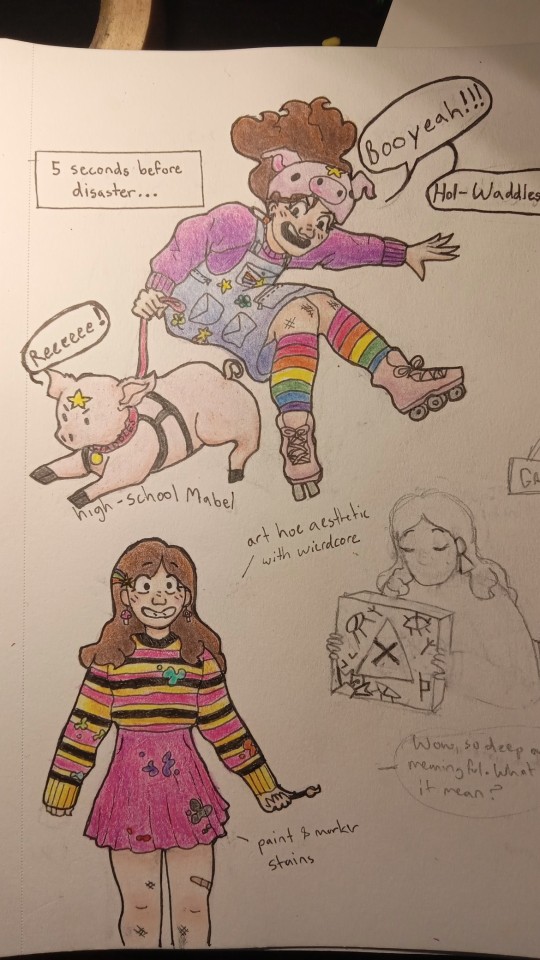

I reimangined Mabel Pines as a high schooler!
I like to believe she would be friends with the weird gays of the arts (theater, band, art, choir, etc) and is an ✨ally✨. She took skating as a new hobby and has triple increased her chances of breaking things and falling down and eating shit.
Waddles has been incorporated in the family similar to a house dog, so he's leash and potty trained. Mabel likes to abuse this privilege by bringing him everywhere and incorporating him into her shenanigans.
Mabel still loves to create her own clothes, and wants to create her own line someday. As well as being a pro skater, multimedia artist, video blogger, costume designer, and everything and anything she can get her hands on.
Her fashion hasn't fully changed from the show. She still wears sweaters and amazing earrings (fashion icon before her time), though has added turtlenecks, skirts and pockets. I like to think she decided to cut her own bangs and experiments with her fashion often. It tends to learn towards art hoe and weirdcore aesthetics.
#maguey art#art#mabel pines#high school version#gravity falls#waddles#sometimes i wonder what alex hirsh would have done#would he have her go through an emo phase LMAO#im gonna make dipper next when i have the mental spoons and time#also the brain power like what the fuck would he look like#omg i just love this show and im sad its finished :(((((
58 notes
·
View notes
Text

[first form] [third form]
Torribit
Tlaloc's leopard frog is relatively recent discovery, a frog endemic to mexico named after the mexican god of rain, of course like almost all animals endemic to mexico its critically endangered due to destruction of its habitat
[source]

agavase
in mexico the agaves sap is used to make different drinks, mainly hidromiel and pulque, this is done trough a complicated process in which its extracted from the core of the plant and then fermented, in many cases this is all still done by artisians and families dedicated to keeping certain techniques
[source]

16 notes
·
View notes
Photo
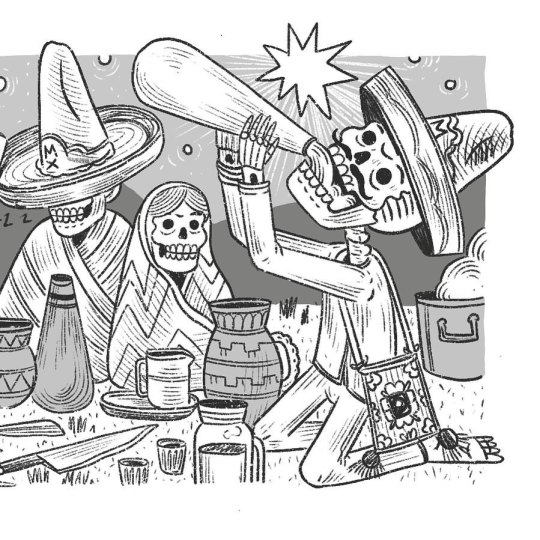
“Sino hay remedio litro y medio” . . . . #mezcal #maguey #oaxaca #mexico #calavera #catrina #drink #skull #engraving #grabado #illustration #art #drawing #procreate (en Oaxaca) https://www.instagram.com/p/CqAkD-Tu22g/?igshid=NGJjMDIxMWI=
#mezcal#maguey#oaxaca#mexico#calavera#catrina#drink#skull#engraving#grabado#illustration#art#drawing#procreate
7 notes
·
View notes
Text


Chucho y Cass
Ciudad de México, mayo 2023
6 notes
·
View notes
Photo

Rolando por Río Elba
#Río Elba#Chela & Go#Mañana Juro#Cocina del barrio#Sharon#Santiago Art#Gener#l Paint#skull#calavera#flores#mural#arte urbano#arte callejero#urban art#street art#maguey#cempasuchil#cdmx#ciudad de méxico#graffiti
13 notes
·
View notes
Text
@okedart gif about the magic surroud the mezcal and the plant.
6 notes
·
View notes
Text

Título: 15 de septiembre 🇲🇽✨
Aquí en esta ilustración estoy representando a Jalisco. Ya que yo nací ahí, soy tapatía! 🇲🇽
✨
El 15 de septiembre se festeja en México el grito de la independencia es uno de los eventos históricos más importantes de nuestro país.❤️✨
https://www.instagram.com/yunnise.art
#art#digital drawing#illustration#drawing#landscape#original art#digital illustration#mexico#dia de la independencia#15 de septiembre#jalisco#maguey#tequila
1 note
·
View note
Text
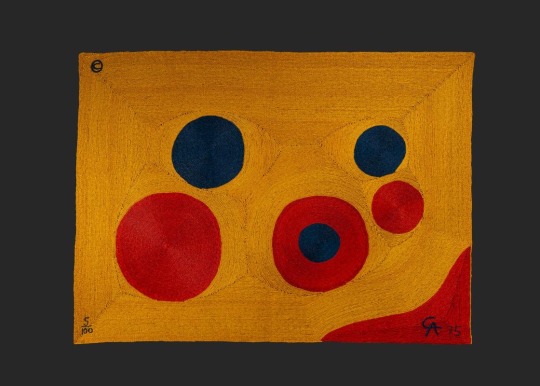




Alexander Calder (Philadelphia, Pennsylvania, 1898 – New York, New York, 1976)
C.A.C. Publications and Bon-Art
1975
Twisted maguey fiber mat
Blanton Museum of Art
113 notes
·
View notes
Text
CHICANO ART MOVEMENT: “Las Manos de Aztlán” art talk with Emmanuel C. Montoya 2023/2024

(Social media capture of Montoya print sale.)
In early May 2023, the Apachicano artist Emmanuel C. Montoya, Bay Area creative, announced through his social media the availability to purchase his vintage prints. For Robert, it was the prime opportunity to add an artwork by Montoya who for many years has dedicated himself as an artist to the Chicana/Chicano community. Within a few moments and with technology’s help, we were in direct contact with Emmanuel and became patrons to the piece titled “Las Manos de Aztlán” - a linocut print measuring 16 inches by 17 inches and was specifically made for the Chicana/Chicano students and faculty on the campus of University of California at Santa Cruz in 1989.
A few weeks later and upon the arrival of the print, we unrolled to survey the “Las Manos de Aztlán” piece and were very intrigued to learn more about it. We messaged Montoya regarding the safe arrival of his artwork and inquired if he was available to answer a few questions about the piece itself. We explained to the artist that we wanted to ascertain more information about the “Las Manos de Aztlán” in order to write a future article.
Montoya replied that he was open to talking more over the phone and we coordinated a future & mutual date to go in-depth about his “Las Manos de Aztlán” print. We called el maestro Emmanuel C. Montoya and we were greeted with warmth y gusto from the artist who welcomed us with a “Que viva la Raza!” After exchanging introductions and stating it was our pleasure to speak with a great community member, artist, elder, and activist, Anita took the lead with this on this one-on-one interview with Emmanuel C. Montoya.
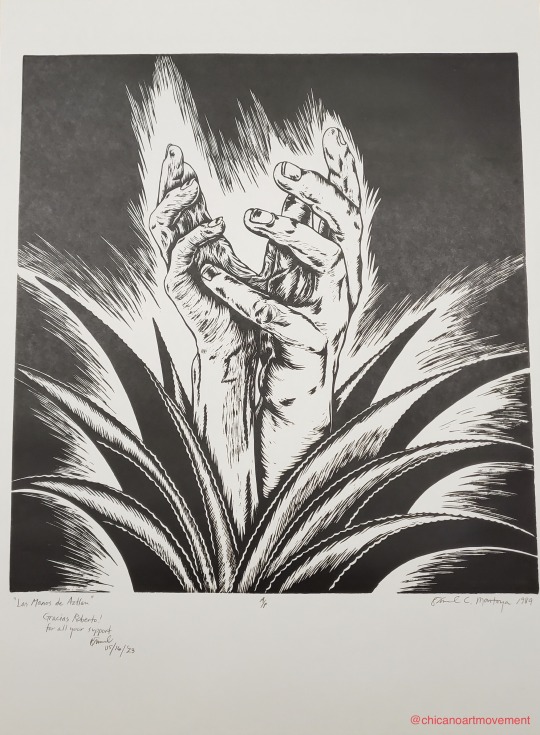
(View of “Las Manos de Aztlán” by Emmanuel C. Montoya, 1989)
When asked about the history and background surrounding the “Las Manos de Aztlán” print, Montoya shared that in 1989 he “was approached by Francisco X. Alacrón, the famous Chicano poet. He was teaching at UC Santa Cruz, at that time, and of course was involved with the Chicano students, at that time. I met him of course in the Mission in San Francisco back then in the ‘80s & ‘70s - very vibrant art community in the Mission at that time. So, he approached me. He’d seen my work and liked my work. He approached me about doing this poster celebrating the Chicano students at UC Santa Cruz. It was the ten year anniversary.”
Emmanuel explained that he featured the maguey at the center of the piece due to la planta’s resilience and adversity against many elements as well as its important symbolization in ancient and contemporary cultures. Montoya happily retold a funny moment of enlightenment when looking at “Las Manos de Aztlán” that “if you looked at the image,” said the artist, “it’s two hands - five and five - which adds up to ten. Of course, I didn’t know that. Somebody else pointed that out to me.” He laughed and continued: “Este so…the idea, of course, is my idea. I thought about the maguey plant which is an important symbol in pre-Columbian/Mexicano/Chicano history and culture. I have the two hands growing from the maguey plant and it, of course, symbolizes their ten years” as a Chicana/Chicano organization on the UC Santa Cruz campus in 1989.

(Detailed view #1 of “Las Manos de Aztlán”)
When asked why the medium of linocut was used, Emmanuel stated that it was his preferred style since he studied specifically printmaking in the woodblock linoleum cut format both at the undergraduate and graduate levels at San Francisco State University (B.A. 1985 and M.F.A. 1991). He explained: “I sort of studied in school but I was also inspired to study to develop my own style, my own interest, in linocut and printmaking. From the tradition and history of printmaking in Mexico. I was very inspired by the work of a number of different Mexicano printmakers in the mid 19th century, the Mexican Revolution. Out of that came so much culture and art and one of those organizations was Taller Gráfica Popular…artist workshop. It was founded in 1935 by Mexicano, Leopoldo Méndez, he along with a number of Mexicano artists and printmakers established this organization TGP [el Taller de Gráfica Popular]. How I can I say this? For me, it was inspiration, it was you know, it was my roots as Chicano artist, as a Chicano printmaker specifically, and I just, you know, did a lot of, how can I say this…research, read, and went down to Mexico…Mexico City…and meet some of those printmakers…Yes, I was…you know, it was my mecca.” He laughed as he recollected his inspiration which has not waivered at all, and has only gotten stronger since his youth.
We inquired more about that trip to El Taller and Montoya was glad to share that “it was such an inspiration…such an opportunity to meet some of those artists in person and trade artwork. And este, in 1985, el Taller was celebrating its 50 year anniversary and so they had a show at Bellas Artes in Mexico City. One of the artists that I specifically meet close to, and became good friends with Alberto Beltran. I met him through another Mexicano artist that was up here [California] in the ‘80s, working with muralists up here, Mexicanos/Chicanos muralists up here. I was introduced to him; Alberto and I became good friends. We communicated, correspondence, and I would send him materials - books, information about the arts as they were happening up here in the Chicano communities. And so, 1984 I got a chance to go down and actually meet him for the first time. And I spent a good time…20 years corresponding back and forth. All those letters and information that he would send me; I saved, I collected, and it is now housed in the Bancroft Library at UC Berkeley [...] He turned me onto all these other artistas: Arturo García Bustos, Alfredo Zalce - was one of the founders of El Taller and he was in Morelia. I had a chance to go out to Morelia and meet Alfredo Zalce. It was so inspiring and it was so historical for me to meet these artists that I had read about and saw their work. It was a delight.”

(Detailed view #2 of “Las Manos de Aztlán”)
Anita further inquired how that inspiration from visiting the artistic mecca of Mexico, El Taller, helped him with his techniques when making the print “Las Manos de Aztlán” for UC Santa Cruz; Montoya responded: “Yes…in 1989, I have been doing printmaking. I studied and did my graduate work in printmaking and my thesis was also in printmaking and actually, I wrote about the connection with Chicano printmakers and with the history and tradition of Mexican printmakers [...] The tradition of Mexican printmakers at that time, at El Taller, it was important to them to create things that reflect their times, you know. And it was work based in realism, you know, something to work with…to…the work that they did that reflected the revolution or reflected their history as Mexicanos, their history as pre-Columbian, Native peoples. It was all so inspiring and of course, for me being here in the Bay Area. I was born in Texas and came to California, came to the Bay Area in 1964. And have been here in the bay Area ever since. Went to school here; got involved in Chicano Art and Chicano Culture, and the Chicano community. A lot of that was inspired by what was happening in other communities across the country, in the midwest, in Texas, in Arizona, in Southern California area. It was all this, how can I say it, birth of activism…very much.”
Activism and resilience are some of the recurring themes within the vast works by Emmanuel C. Montoya - both big and small pieces. Montoya was glad to hear that CHICANO ART MOVEMENT had visited his works in the Bay Area via trips to:
CHICANO ART visits: San Francisco Public Library, Mission Branch 2013
CHICANO ART MOVEMENT visits: SFO Museum at San Francisco International Airport (SFO), California 2014.
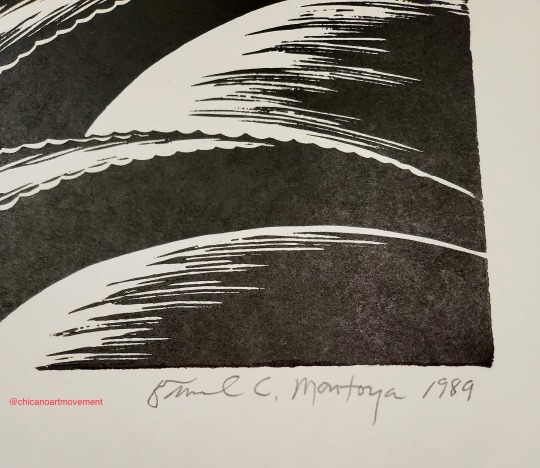
(Detailed view of artist’s signature on “Las Manos de Azltán”)
To close the interview with the great artist Montoya, it was asked if he could share more about the term Apachicano as well as any projects that he was currently working on at his studio, Apachicano Art Productions. Emmanuel stated: “I am Apache and I am Chicano. I guess one day I decided to just put the two together. (Chuckles) My history as an Apache with that culture…many years…a chingado…in the past, I would say that for 40 years or so that I have become aware that I am Apache, I am Native American and what that means and how that’s reflect in the work that I do as an artist, as a print maker [...] I am retired [and] I work out of a studio; I have been for the past 35 years now here in Berkeley. I have produced quite a bit of work.”
During our final exchange, Emmanuel kindly extended an personal invitation to visit him and his taller in Berkeley and we in return, thanked Emmanuel for the honor to interview him and for the opportunity to learn more about him, his trajectory, his community work, and some of the unknown Chicana/Chicano art history.
#emmanuel c montoya#chicano art#bay area#san francisco#uc santa cruz#chicano anniversary#chicano artist#berkeley#texas#linocut#art print#apachicano#california art
5 notes
·
View notes
Text
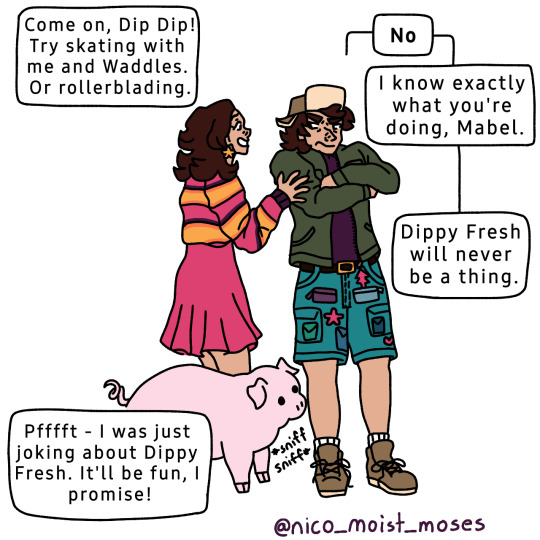
It was not fun . . .
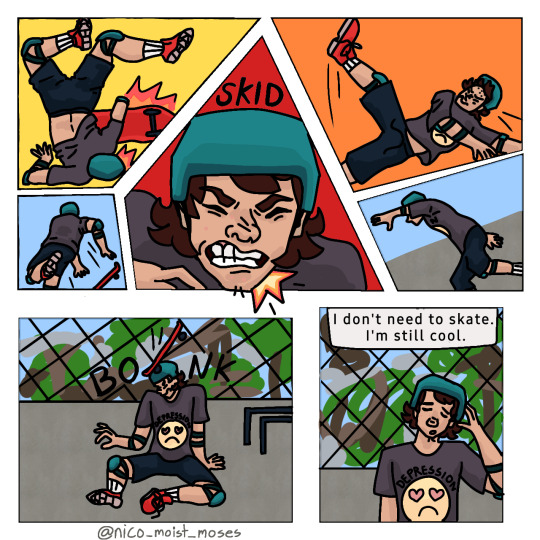
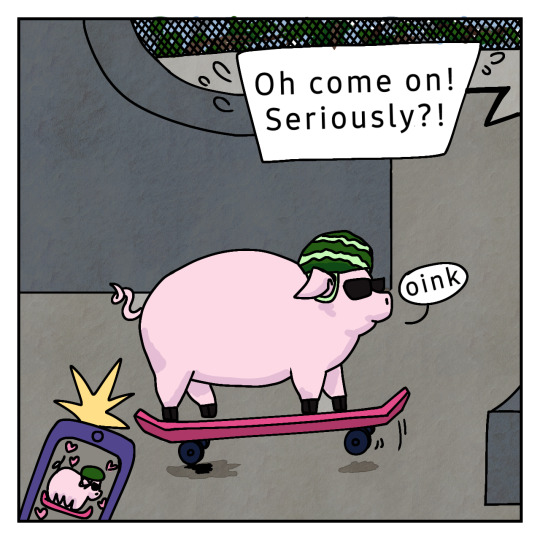
#everyone including Gideon and Waddles can skate but Dipper#Dipper claims its mostly out of spite because theres no way he'll make Dippy Fresh#a self-prophecizing thing#highschool mystery twins#highschool au#gravity falls#gravity falls fanart#comic#digital art#moist maguey art#dipper pines#mabel pines#waddles#short comic#btw all the poses are real skateboarders eating shit and omg they look so painful and baddd#art#skateboarding#also i spent too fucking long on the color pallete#the twins are on opposite sides of the color spectrum#mabel is warm colors and is literally and figuratively a ball of sunshine#dipper has cool colors and shows his more calmer edgy side#kinda like artemis and apollo these twins are polar opposites yet compliment each other harmoniously#color theory#im trying put comics! I've never been able to finish them so im really proud of this one!!
72 notes
·
View notes
Text

[first form] [second form]
knowing what they turn into would you have gone for the other one?
tlatoad
tlaloc was the mexican god of rain lightning and earthquakes, people would pray to him so that there would be rain to help crops grow.
tlatoad is now longer just a tlaloc rain frog but also a Sonoran desert toad, one of the largest toads in the region and well known for the toxins exuded from its glands as the toad is usually hunted so the toxins can be used as psychotropics
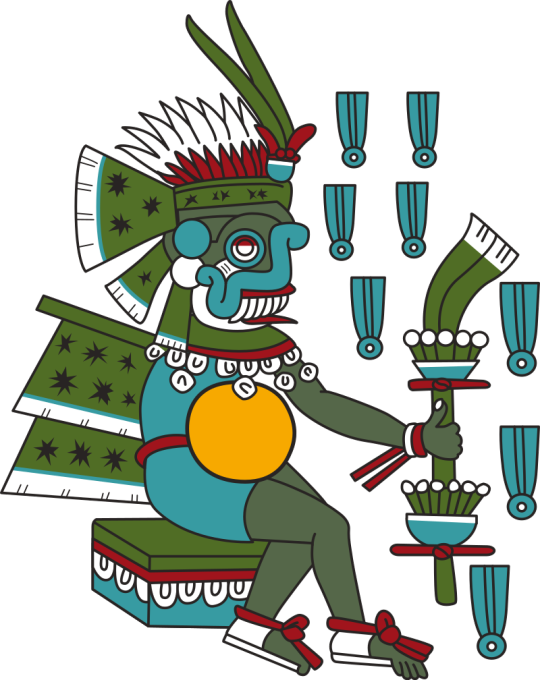
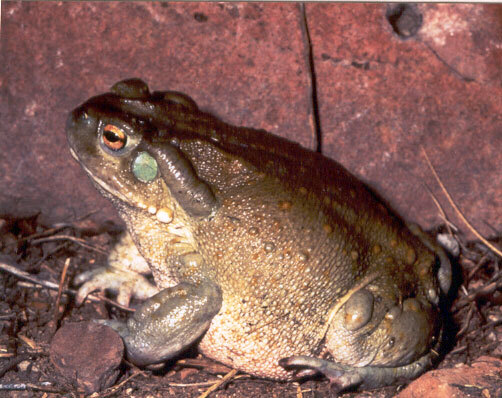
meyaflor
meyaflor on the other hand is based on the leyend of mayahuel, godess of the maguey plants ad because of their relation to pulque godess of drunkenness as well, as a godess of a plant and its flower she is also a godess of fertility. She is often depicted in the midle of a maguey plant surrounded by their flowers


[source]
#my art#oc#oc art#creature design#artists on tumblr#mesoma region#faketober#fakemon#fakemon art#toad#maguey#agave
13 notes
·
View notes
Photo

“El mezcal es muy romántico, huele a tierra humeda” . . . #mezcal #maguey #oaxaca #mexico #calavera #catrina #drink #skull #engraving #grabado #illustration #art #drawing #procreate #espadin (en Oaxaca) https://www.instagram.com/p/CqAkm-aOFb9/?igshid=NGJjMDIxMWI=
#mezcal#maguey#oaxaca#mexico#calavera#catrina#drink#skull#engraving#grabado#illustration#art#drawing#procreate#espadin
4 notes
·
View notes
Photo


Ometochtli, Two Rabbit, Lord of Drunkenness, Ecstasy, Pulque, Maguey, Ceremony
art by @MiCorazonMexica
17 notes
·
View notes
Text
Media References and Puns of 3-25 A Taste of Tal'Dorei

Thanks to @beliched for this art piece!
Media References
(0:00:51) Sam: *singing, to the tune of Fȕr Elise* Beethoven wrote this song, but I can change it because he’s dead and can’t sue me.
(0:01:22) Sam: Quip’s donating $5 to the Ali Forney Center…
0:01:49) Sam: *singing, to the tune of “Row, Row, Row Your Boat”* No, no, no, he said…
(0:02:10) Sam: Easy there, Mister Mephistopheles. (Mister Mistfofelees/Cats the Musical, Mephistopheles)
(0:02:16) Sam: M-A-T-T. Well, Master Chief…
(0:02:21) Sam: *singing, to the tune of “It Had to be You”) It had to be you…
(0:02:31) Sam: No problem, Maguey.
(0:02:53) Sam: *singing, to the tune of “Hail to the Chief” Hail to the teeth…
(0:04:26) Ashley: *singing* It’s ladies’ night, oh what a night. (“Ladies’ Night” by Kool & The Gang)
(0:05:06) Sam: The 17 tracks are written by a variety of composers, including members of the Hexany Audio roster, Omar Fadel, and our good friend Colm McGuinness. We can’t forget the gorgeous album art is by Kent Davis.
(0:07:54) Marisha: Big shout out to Minnow Mountain who helped us animate it and partnered with us.
(0:17:27) All: *singing* Continuing your way. (“A Thousand Miles” by Vanessa Carleton)
(0:17:37) Matt: How very Dua Lipa of you.
(0:18:04) Sam: *singing* Pullin’ their way! (“A Thousand Miles” by Vanessa Carleton)
Read more at critrolestats.com
34 notes
·
View notes
Text
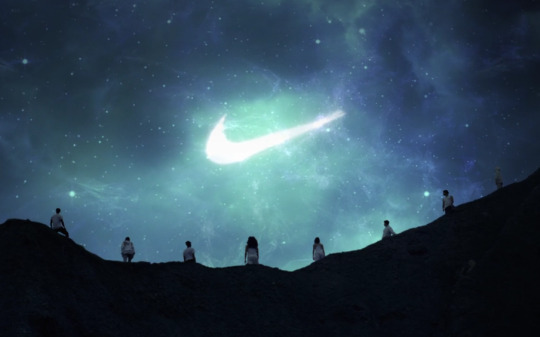
“Somos 1” Una celebración del 40 aniversario del Nike Air Force 1, que muestra cultura, estilo y unidad.
Nike está celebrando el 40 aniversario de su icónico Air Force 1, y lo está haciendo con un spot que muestra la importancia de este zapato en diversos ámbitos del deporte, la música, la moda, el arte, la calle y la ciudad. Este modelo ha sido inspiración para innumerables artistas y diseñadores a lo largo de estos 40 años, el cuál ha conectado a personas de diferentes edades, culturas e idiomas.
La idea de esta creativa celebración ha estado a cargo del cineasta Enrico Poli y Undervilla, una productora con sede en Bolonia, Italia. “Somos 1” es una campaña que simboliza la unidad que transmite el Air Force 1, promoviendo la inclusión y trascendiendo las diferencias culturales, ha servido también como metáfora del esfuerzo colectivo para unir a la sociedad.
vimeo
El spot muestra imágenes intermitentes, fallas y música, que combinados dan la sensación de caos, pero al mismo tiempo lleva una estructura del viaje de un héroe clásico que puede ser apreciada por personas de todas las edades y que resistirá a través del tiempo. La campaña tiene como objetivo capturar la esencia cultural del AF1, mientras presenta al icónico modelo de una forma accesible y agradable para el público actual y del futuro, inspirando a las nuevas generaciones en todo el mundo.
Por: Yocelin Maguey
Síguenos en nuestras redes sociales, encuentranos como: @ideamkt360
#marketing#ads#advertising#publicidad#creatividad#diseño#design#inspiration#nikesportswear#nike#air force 1#spot#Vimeo
3 notes
·
View notes
Photo
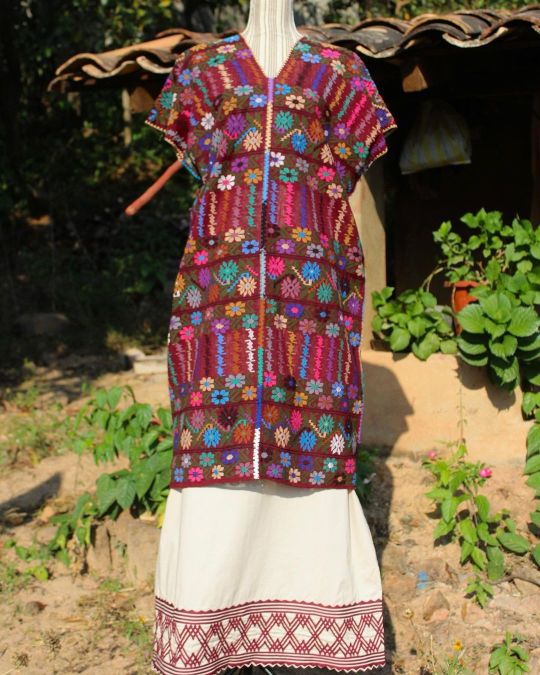
Huipil elaborado por la compañera artesana Elizabet de la comunidad de Plan maguey 1, municipio de Xochistlahuaca Estado de Guerrero. El huipil fue elaborado bajo la técnica de 3 alzadores. Medidas 63 cm de ancho 103 cm de largo $6 mil pesos Opciones de pago Depósito Transferencia 3 meses sin intereses Sistema de apartado PayPal Mercado libre #artesanías #artesaniamexicana #artesanal #arte #artecontemporaneo #huipil #huipiles #kaftan #hechoamano #hechoenmexico #crafts #craft #mexico #mexicocity #méxicoesoriginal #mexicomagico #mexicolindo (en CDMX) https://www.instagram.com/p/CnZiLiZO_qJ/?igshid=NGJjMDIxMWI=
#artesanías#artesaniamexicana#artesanal#arte#artecontemporaneo#huipil#huipiles#kaftan#hechoamano#hechoenmexico#crafts#craft#mexico#mexicocity#méxicoesoriginal#mexicomagico#mexicolindo
5 notes
·
View notes